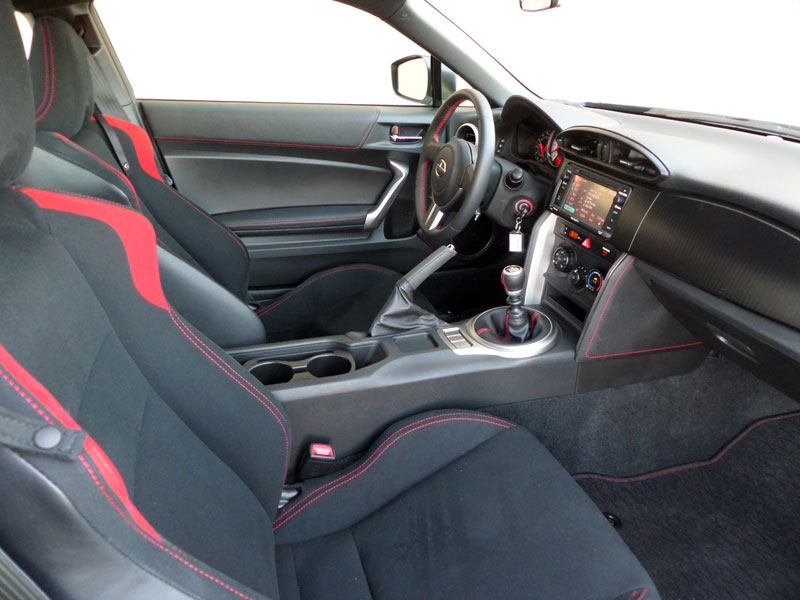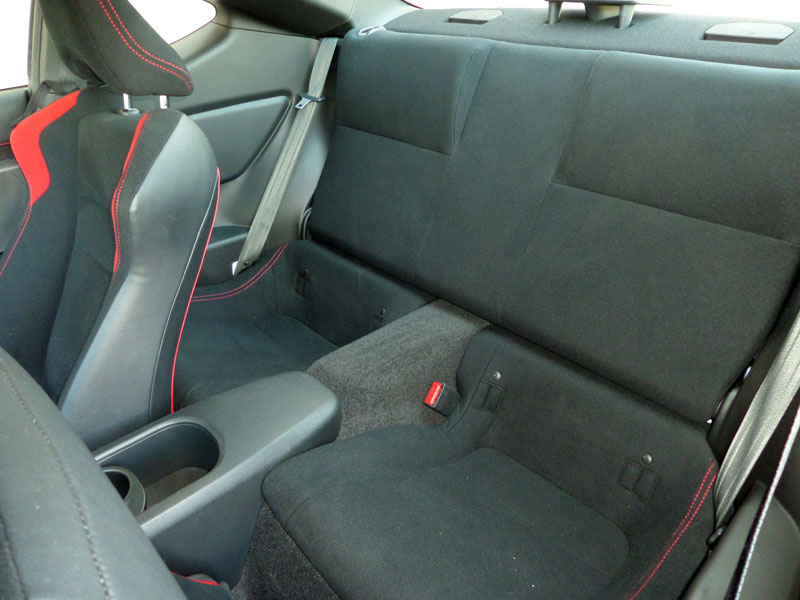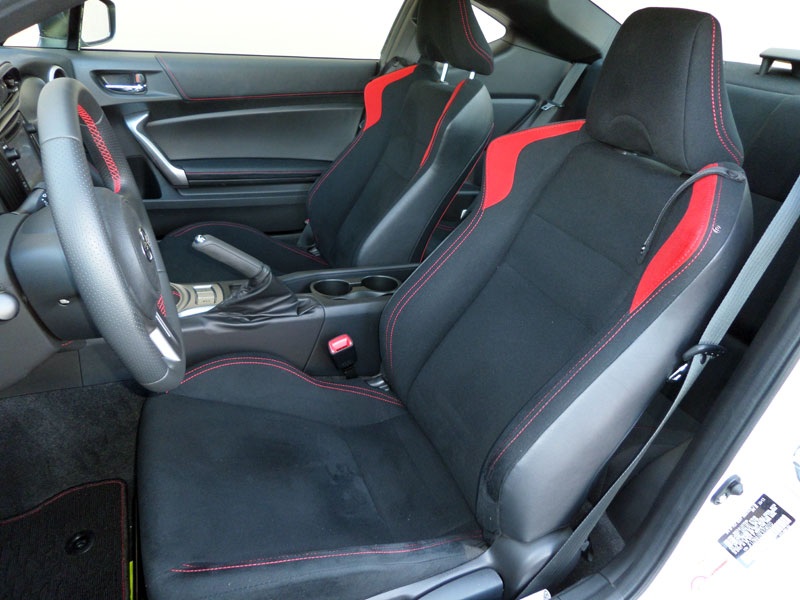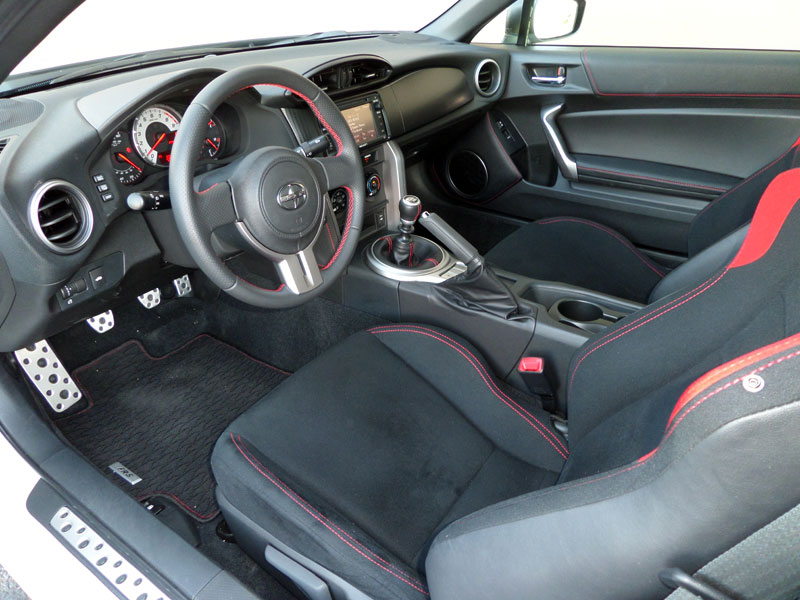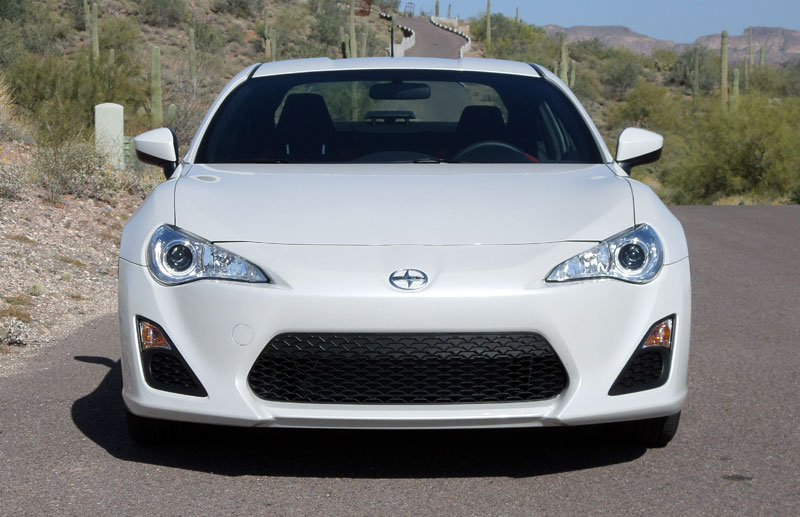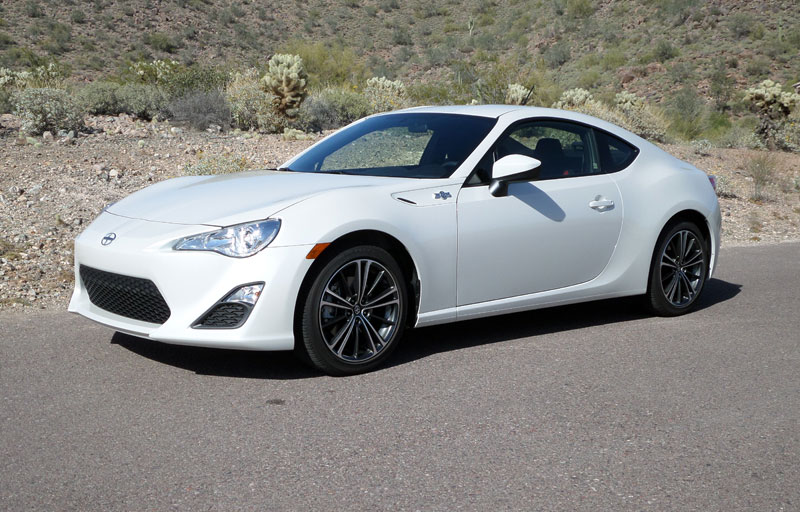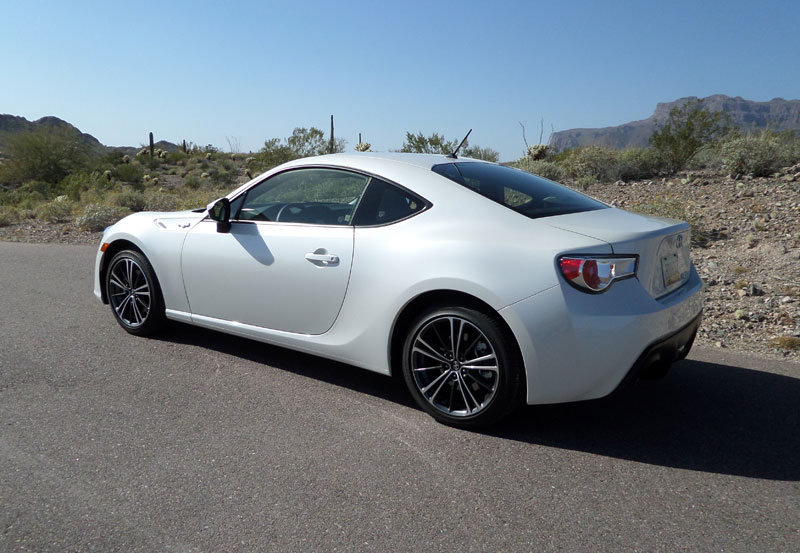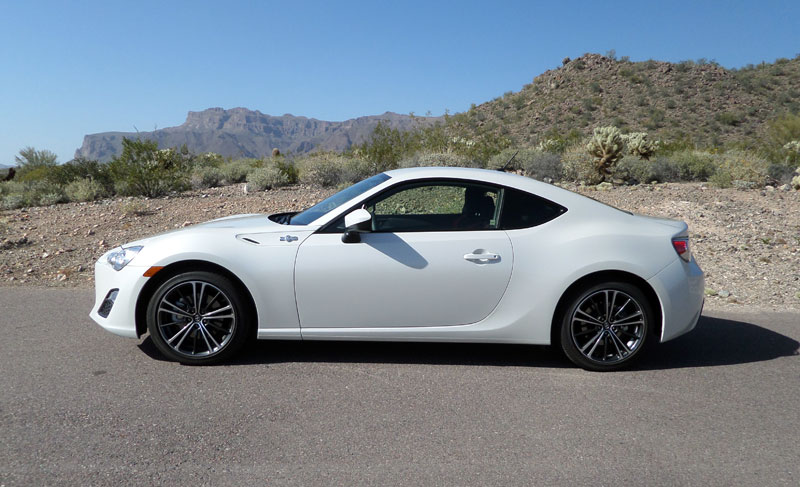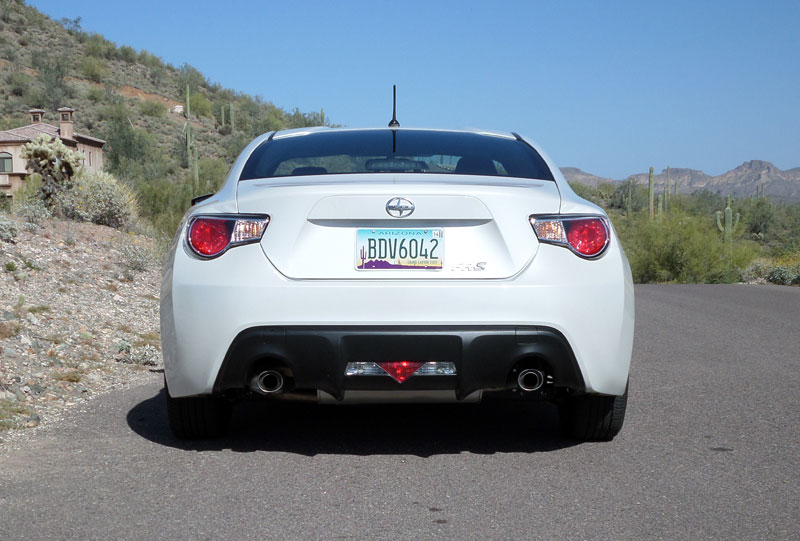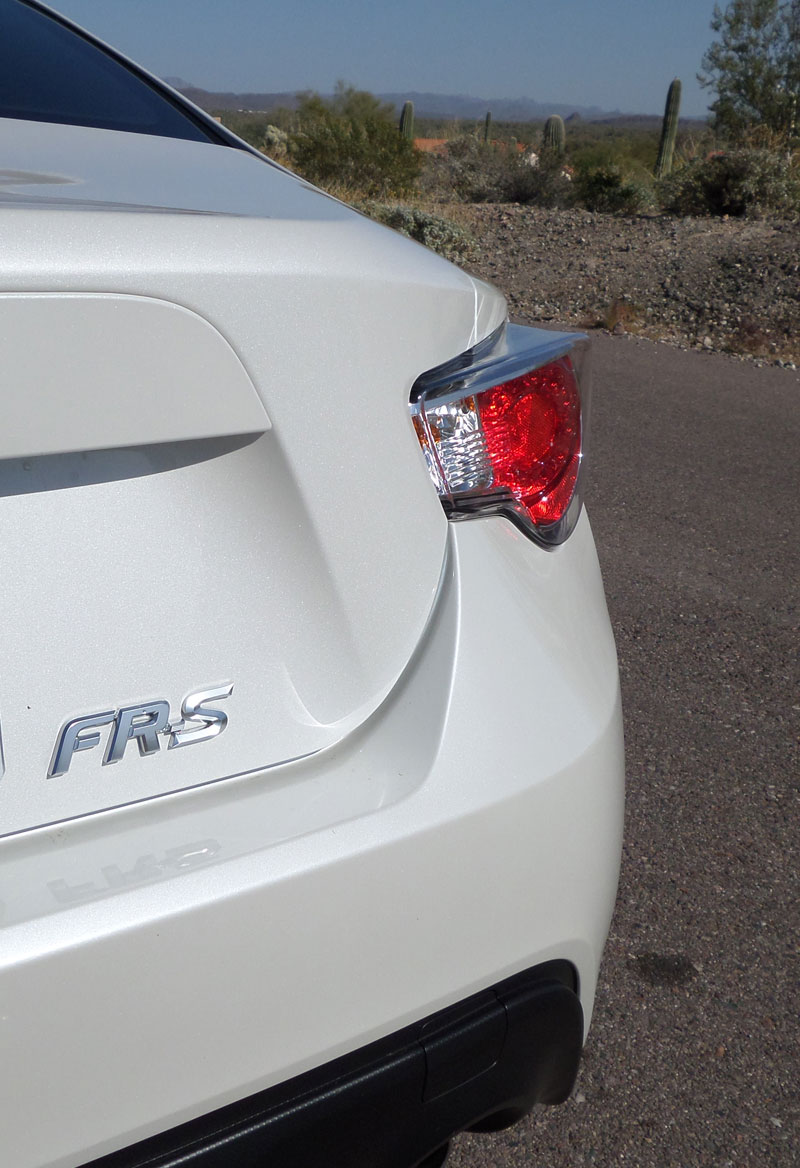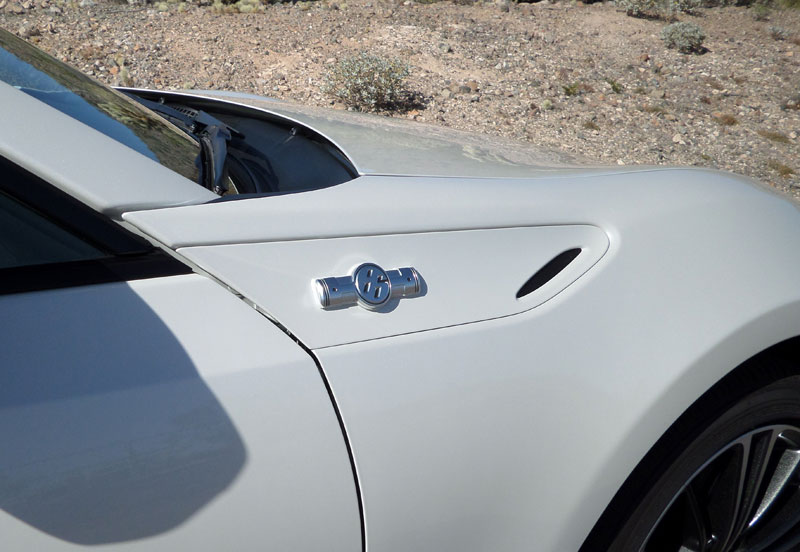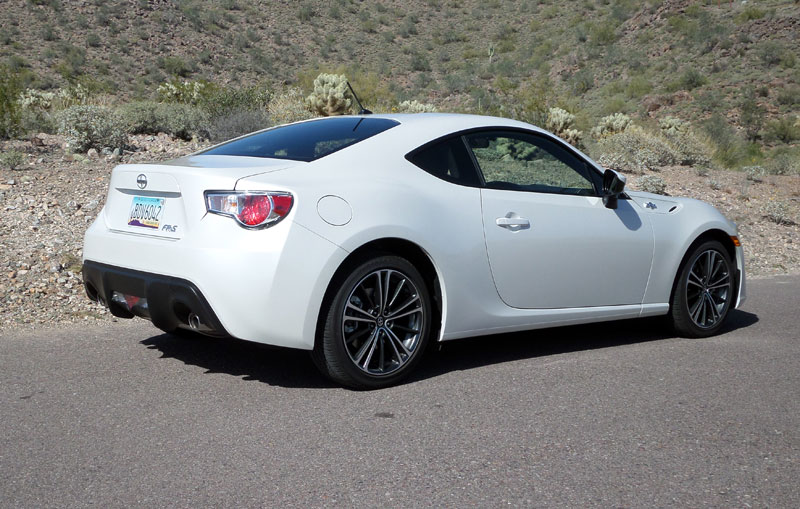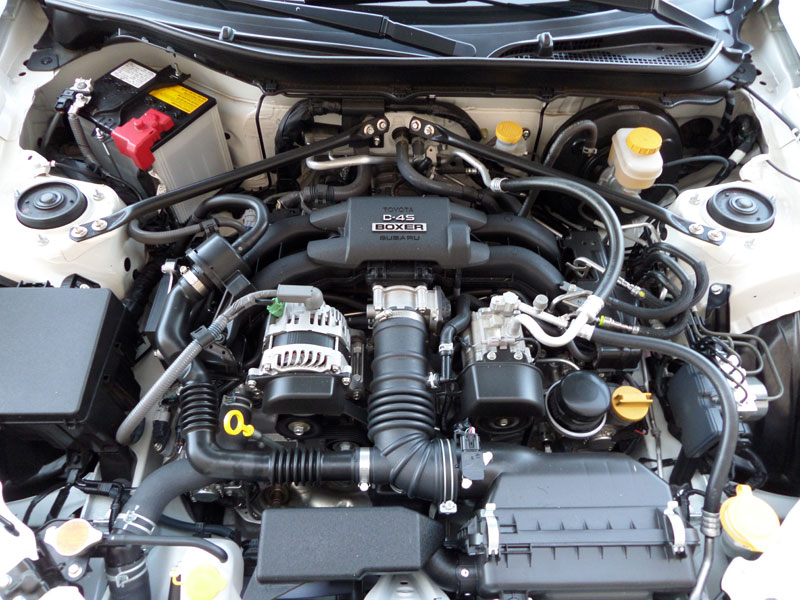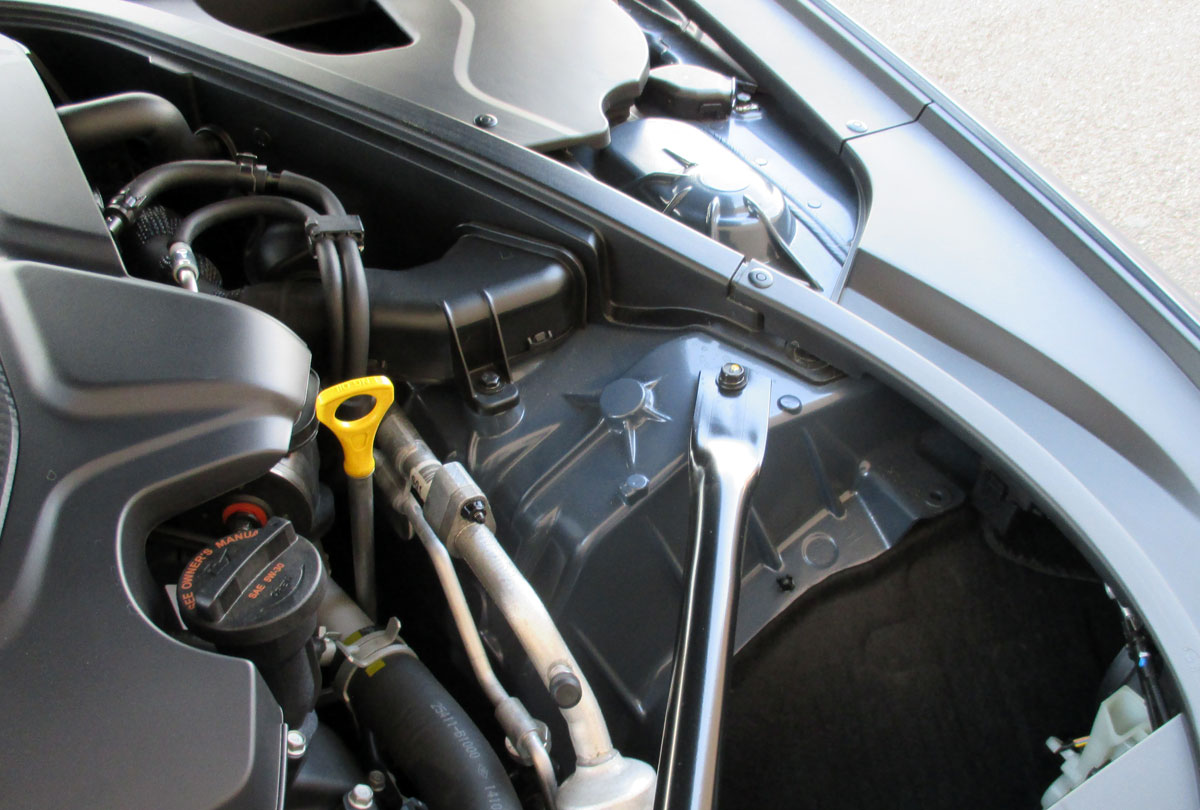The Scion FR-S and Subaru BRZ share a nearly identical look save for a few small details in the fascias and fender ornamentation. The companies surprisingly really didn’t choose to take any ovations to separate their identities at all.
The style is distinctly Japanese however and shares a lot of heritage with sports car design DNA of the 1970’s and even back to the 1960’s with the Toyota 2000GT. The modern interpretation of the Scion FR-S has a deep front fascia and headlamp scheme that is right in line with the rest of their model lineup.
Its 17” alloy wheels wheels are also shared with the Subaru BRZ and don’t get to aggressive in looks or grip with their 215/45R17 Michelin Primacy HP tires.
The cockpit fits the sports car mold near perfectly. It’s simple and down to business with seats made to hold you tight like a fist. They’re comfortable and wear well over long drives with their cloth fabric that mimics suede to some degree.
The audio system I found a bit lacking in both its sound quality and ease of use. The touch screen has small buttons which are slow to respond, and menus which offer little detail in adjusting sound metrics. Luckily it has an aftermarket Double DIN mounting format so it can be replaced.
Headroom is surprisingly good once you slink down low to get into the car. Adjusting the seat also takes little time to get there. The rear seat is classic 2+2 sports car design, which means it’s for groceries or a small pet.
Handling is sublime if not downright nailed on target. Despite the rather hum-drum tires which it shares with the Toyota Prius, grip is well matched to the chassis tune. The suspension is compliant for a good ride, but offers excellent response and cornering feel.
Steering is weighted well for curvy roads and has enough feel to give you confidence both on the back roads and on the road course. Brakes are somewhere between adequate and above average, only heating up with fade after a good deal of abuse.
Under the hood is something different for a Scion or Toyota, a 2.0 liter flat-four cylinder “boxer” engine sourced from Subaru. It does have some Toyota tweaks including a D4S fuel injection system which features both port and direct fuel injection.
The result of that fuel injection system and high 12.5:1 compression ratio is some 200 horsepower at 7000 rpm and 151 lb. ft. of torque at a pretty heady 6400 rpm.
Actually enjoying the engine is a chore. Because of its high rpm power curve and its design, getting power down is a noisy rough buzzy experience. This engine has little usable power for daily slogs from stop light to stop light and isn’t enjoyable above about 4000 rpm.
It could really use a turbocharger to smooth it out as well as give it a fatter power curve lower in the rev range. The 3.5 liter V6 from the Lexus IS/GS would be nice too.
Despite the gripes about noise and drivability, we achieved a pretty impressive 31 mpg combined in our week with the FR-S. Considering its EPA ratings are 22 mpg city, 30 mpg highway and only 25 mpg combined, this is commendable.
Overall the FR-S is an ideal entry level sports car in terms of value, handling, comfort and driving character with the exception of its rough box of rocks motor. If it had an enjoyable powerplant, it would be without a competitor.

